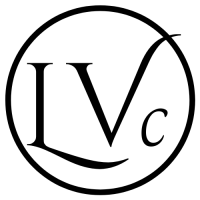
Cemetery History
Located behind the Ithaca High School off of Lake Street, which at one time had a commanding view of Cayuga Lake. It is a beautiful serene resting place of close to 8,000 burials, which includes many notables from the Ithaca community.
On March 31, 1894, Horace E. Hand of Scranton, Pennsylvania, and Herman Bergholtz of Ithaca purchased the 640 acre Renwick tract on the north side of Fall Creek at the edge of Cayuga Lake. Their plan was to include residential areas, a trolley amusement park, called Renwick (now Stewart Park), and a cemetery to be known as Lakeview. William Webster, a landscape architect was hired to lay out the amusement park and the cemetery.

Receiving Vault
In 1895, a Receiving Vault was constructed by Stephen M. Oltz, in order to encourage immediate sales of burial lots. The vault was designed by local architects Clinton Vivian and Arthur Gibbs. In recent years, the original doors were removed, restored, and reinstalled.
Also built in 1895 was a caretaker’s lodge and entrance gates for the cemetery. The gates were designed by Vivian and Gibb, only the stone piers remain today.
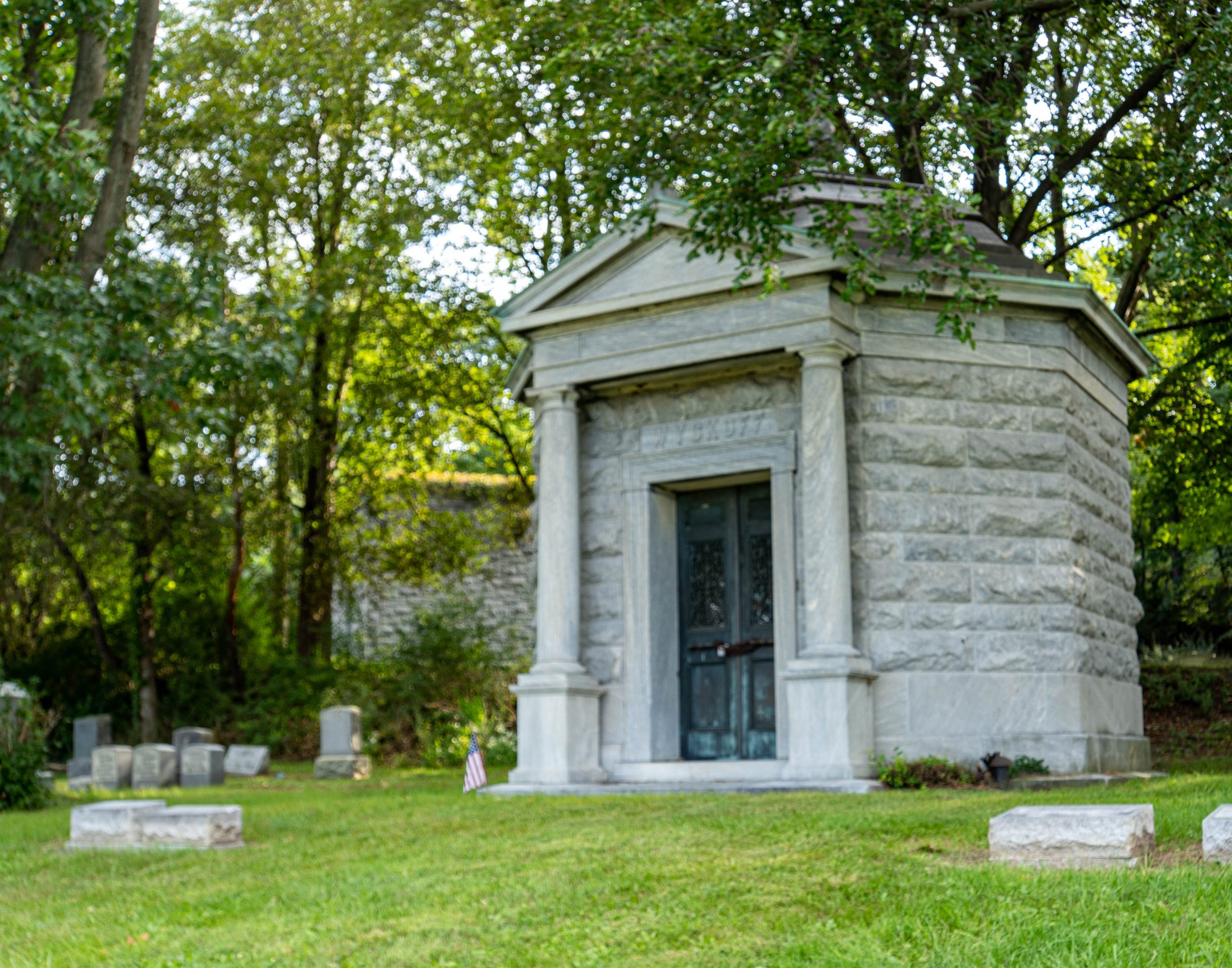
Wyckoff Mausoleum
In 1894, after William O. Wyckoff had amassed his fortune with the newly invented typewriter, he decided to build a vacation home in a picturesque spot on Carleton Island in upstate New York.
Willam Miller, an architect known for his work at Cornell University, was commissioned to design the villa. Construction of the property finished in 1895, however, it was never the dream home Wyckoff hoped it would be.
In 1895, after spending just one night in the home, Wyckoff suffered a heart attack and died at the property.
His sons, Edward G. and Clarence F. Wyckoff had a mausoleum erected at Lake View as a memorial to their father. It was designed by famous architect William Henry Miller who also designed many homes that. still stand in the Ithaca area, one of the best known is, the William Henry Miller Inn on the corner of Aurora and Buffalo streets.
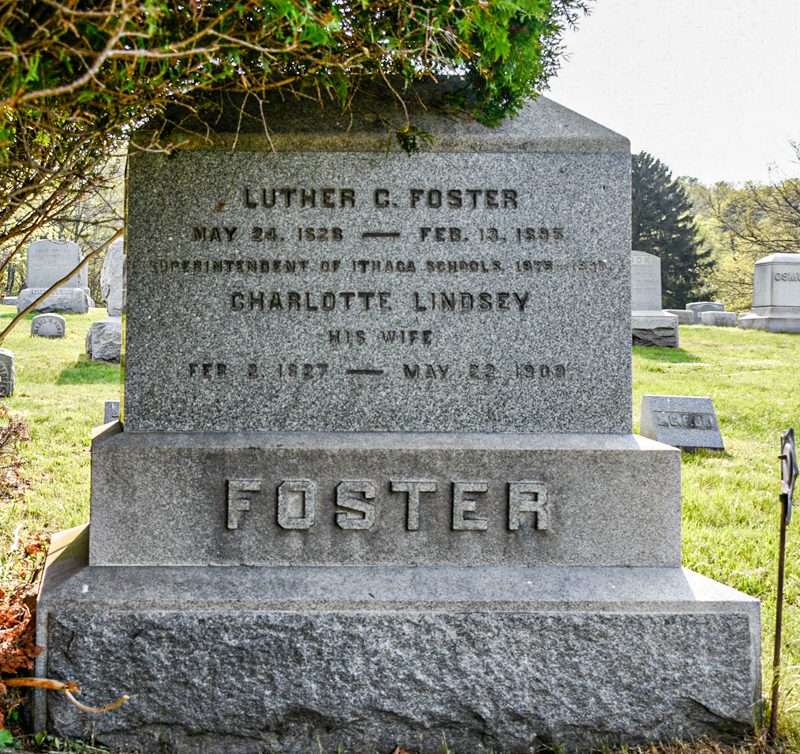
History
Luther Clark Foster who died in 1895 was the first Ithaca Superintendent of Schools in Ithaca. He was also the first person buried in Lake View Cemetery.
Historical Progression: From the early years between 1895 and the mid 1940’s there were many deaths due to epidemics, lack of medical care, etc. A great many babies died during the early days, months of their short lives. There were also many stillborn children, sometimes both mother and baby died during delivery. Life expectancy has also changed, people today are living longer, primarily to improved medical care and lifestyles.
It was not uncommon to have upwards of 100 burials in any particular year at the cemetery. Today, there are between 12 and 30 per year. Of course, costs for burials has increased considerably. Cremation is increasingly more desireable.
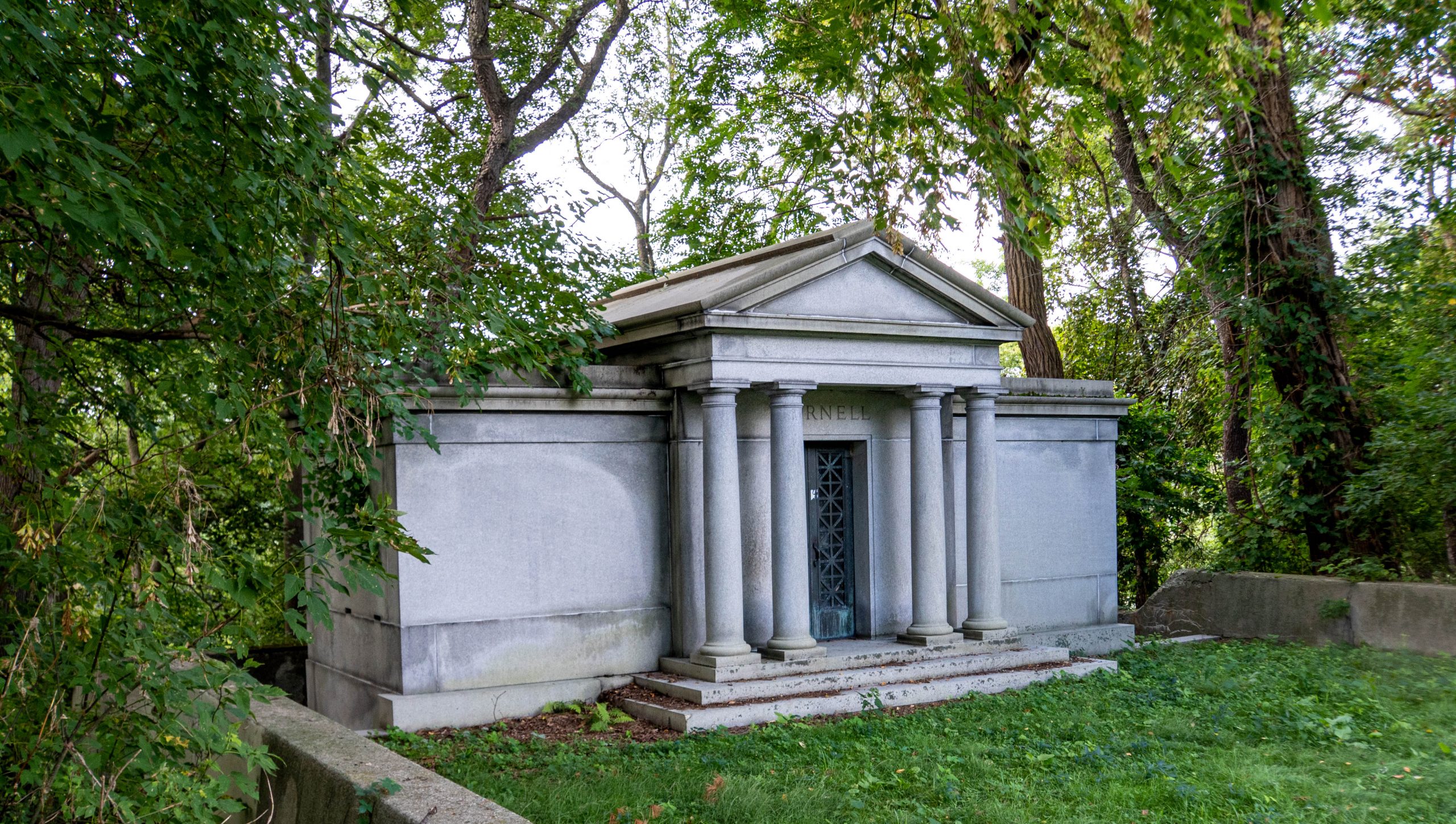
Cornell Mausoleum
Constructed in 1909, was designed by William Henry Miller in a grotto-like setting at the edge of the cemetery.
The exquisite decorative work on the interior is said to be the product of Tiffany Studio of New York City. This mausoleum contains the remains of many Cornell family members. Miller’s own grave is opposite and on axis with the entrance of the Cornell mausoleum and is marked by a large wrought iron cross.
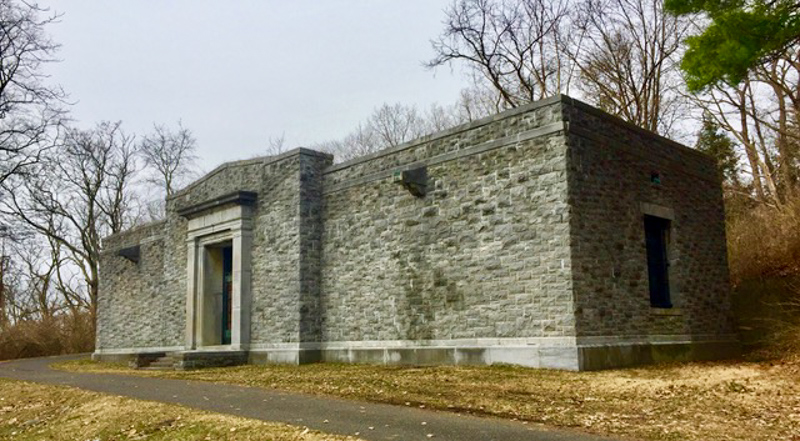
Lake View Cemetery Mausoleum
The large mausoleum, constructed circa 1912, is said to have been built as a speculative venture of the cemetery association.
Today, this building is in need of total restoration inside and out.
Notable Botanist, Liberty Hyde Bailey and his family are interred in this mausoleum. Professor Bailey was a very well known Botanist at Cornell University. Bailey Hortorium and Bailey Hall are named in his honor.
There are many notables of the community who are buried throughout Lake View and the mausoleum.
